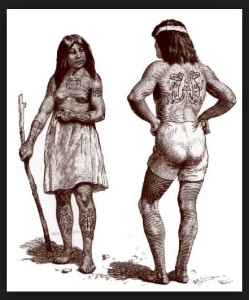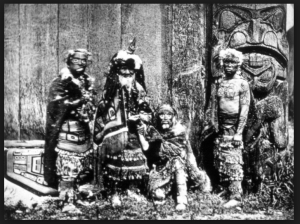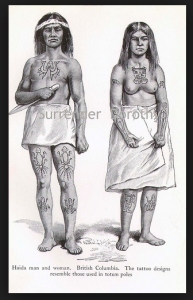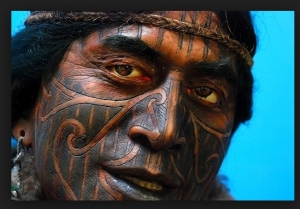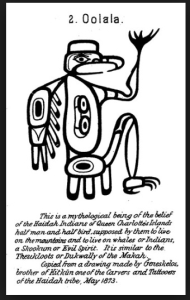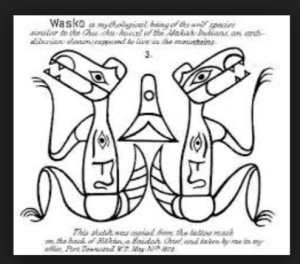Tattoos: A Long-Standing Native American Tradition
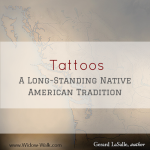 In Widow Walk many of the First Nation Haida, Tlingit, Bella Bella, Bella Coola and Kwakiutl characters wear prominent tattoos and other body decorations. In one scene, a Makah woman, slaved to a Salish tyee (chieftain), recognizes the distinctive markings of the naked Haida warrior she encounters while retrieving water from a stream. She is terrified because the markings were similar to those worn by members of a raiding party that had attacked her village when she was a child.
In Widow Walk many of the First Nation Haida, Tlingit, Bella Bella, Bella Coola and Kwakiutl characters wear prominent tattoos and other body decorations. In one scene, a Makah woman, slaved to a Salish tyee (chieftain), recognizes the distinctive markings of the naked Haida warrior she encounters while retrieving water from a stream. She is terrified because the markings were similar to those worn by members of a raiding party that had attacked her village when she was a child.
Tattoos hold great significance in many cultures, particularly that of many Native American, Australian and New Zealand tribes.
Various Native American tribes used the art of tattooing to tell a story or to identify things about themselves.
- Visual imagery
- Tattoos may show a scene that immortalizes the young brave’s first kill or transition into manhood.
- Battle scenes may indicate heroism or sacrifice.
- Animal imagery conveyed ideas about harnessing that animal’s power.
- Tattoos were also used an identifier:- as a symbol to show inclusion into a particular clan or tribe, – to indicate marital status (in females), or as symbols of particular prowess or success, e.g. some braves used marking to show how many enemies they had killed in battle (as described in Widow Walk).
- Today, Native American tattooing continues, not only among Native American people, but as a style embraced by people of varied cultures and backgrounds.
- Some young people with Native American ancestry honor their heritage with tattoos that associates them with their ancestors’ tribe specifically.
- Animal symbolism is a popular choice that crosses cultural barriers. In Widow Walk the animals depicted include Raven, Bear, Eagle, Dove, Hawk, Beaver, and Wolverine.
